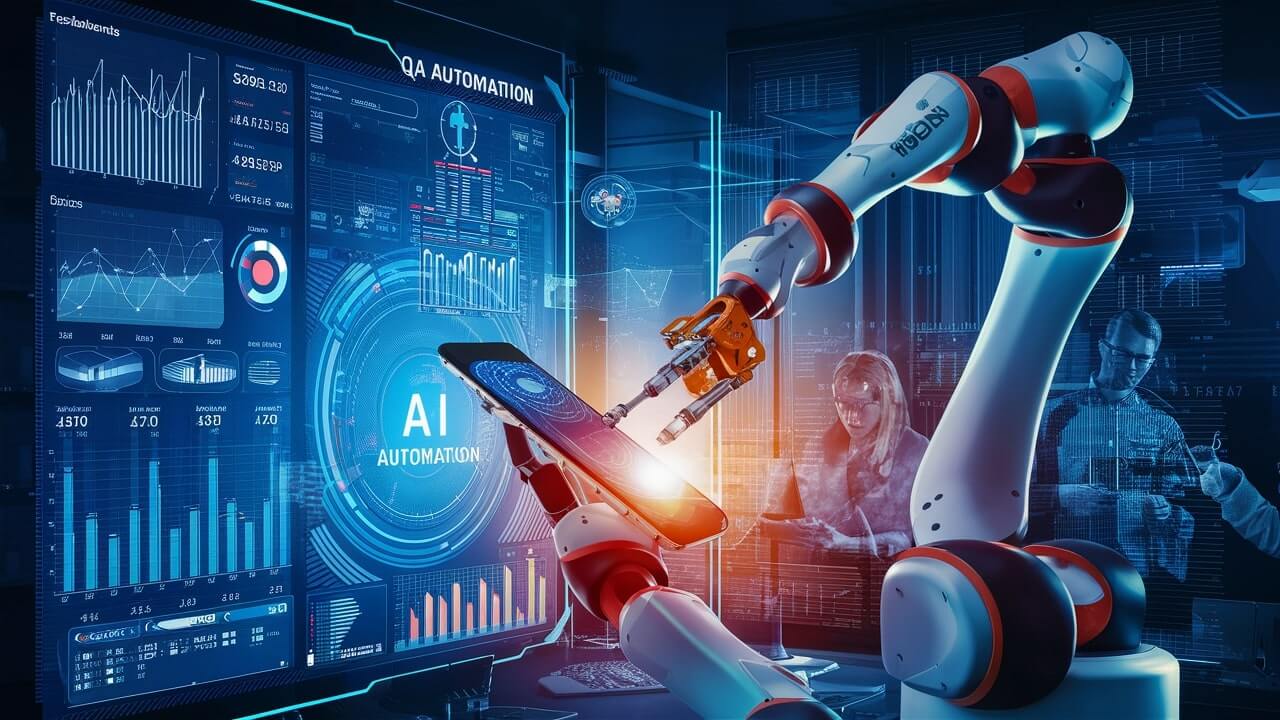In today’s rapidly evolving tech landscape, AI-driven test automation is reshaping how businesses approach software quality assurance. This cutting-edge strategy is critical for ensuring robust, efficient, and high-quality software products.

Understanding AI-driven Test Automation
The term AI-driven test automation refers to the utilization of artificial intelligence technologies to automate the traditionally manual process of software testing. By integrating AI, testing processes become faster, more accurate, and less prone to human error.
The Importance of AI in Automation
Artificial Intelligence introduces unprecedented capabilities in automation. With AI, testing tools can adapt to new code, recognize patterns, and predict potential software failures. This is transforming the quality assurance landscape by making testing more proactive rather than reactive.
How AI-driven Test Automation Works
AI-driven test automation uses machine learning algorithms to learn from past test cases and evolve, making testing more reliable over time. Automating repetitive tasks allows QA teams to focus on more complex areas requiring human intervention.
Machine Learning in Software Testing
Machine learning enables systems to automatically improve their processes based on data patterns. For instance, testing platforms can suggest specific tests based on the history of bugs identified in past instances, enhancing efficiency and coverage.
The Role of AI in Identifying Bugs
Traditional testing methods may miss subtle bugs that can lead to significant problems post-deployment. AI-driven test automation can detect these bugs early in the development process, minimizing risks and costs associated with fixing them after deployment.
Early Bug Detection
With AI tools, it’s possible to identify and rectify software defects early in the development cycle. This proactive approach is crucial for maintaining software quality and meeting user expectations.
Enhancing Test Coverage with AI
A major advantage of using AI in test automation is the ability to enhance the breadth and depth of test coverage. This means better testing across diverse use-case scenarios, which is critical in contemporary software development.
Improved Test Scenarios
AI empowers testing with its ability to cover edge cases that might be overlooked by human testers. This comprehensive approach to test coverage is vital for creating robust software applications.
Benefits of AI-driven Test Automation for QA Teams
AI-driven test automation significantly reduces the time spent on repetitive tasks, allowing QA teams to allocate more resources to strategic activities. This translates to higher job satisfaction among testers and improved testing outcomes.
Efficiency and Productivity
The automation of mundane testing tasks increases overall productivity. QA teams can swiftly execute extensive test suites, leading to faster release cycles and higher software quality.
Cost-Effectiveness of AI-driven Testing Solutions
While the initial investment in AI technologies may seem significant, the long-term cost savings from enhanced testing efficiency and reduced defect rates make it a cost-effective solution for many organizations.
Long-Term ROI
Deploying AI-driven test automation tools leads to a substantial return on investment by lowering post-production maintenance costs and minimizing downtime caused by software bugs.
Challenges Faced in Implementing AI in Test Automation
Despite its advantages, the implementation of AI in test automation comes with challenges, including the need for skilled personnel and substantial initial investment.
Addressing Skill Gaps
Organizations need to invest in training and education to bridge the skill gap and effectively leverage AI technologies in their testing processes.
The Future of AI-driven Test Automation
The future holds immense potential for AI-driven test automation, with continuous advancements expected in AI technologies making testing more efficient and effective.
Innovations on the Horizon
Emerging technologies like AI-based exploratory testing and intelligent automation frameworks are set to redefine the future of software testing.
Real-world Applications of AI-driven Test Automation
Several industries are leveraging AI-driven test automation to achieve superior software quality. For instance, in the e-commerce sector, automated testing ensures smooth user experiences across various platforms.
Case Study: E-commerce Testing
E-commerce companies integrate AI-driven tools for web and mobile app testing to enhance the reliability and efficiency of their platforms.
AI-driven Test Automation Tools
Numerous tools, such as Selenium and Appium, are incorporating AI capabilities to enhance automation efficiency. These tools play a pivotal role in the AI-driven testing ecosystem.
Choosing the Right Tool
Selecting the appropriate AI-driven tool depends on specific project requirements and team capabilities. Ensuring a proper fit is crucial for maximizing the benefits of AI automation.
Conclusion: Embracing AI-driven Solutions
Incorporating AI-driven test automation into the software development process is no longer a luxury but a necessity for businesses aiming to maintain a competitive edge. As we look to the future, embracing these technologies will be instrumental in ensuring greater software reliability and innovation.
Next Steps for QA Teams
QA teams should explore AI tools and skills to stay ahead of industry trends. Investing in AI-driven solutions is key to achieving long-term success in software quality assurance.

FAQs on AI-driven Test Automation
What is AI-driven test automation?
AI-driven test automation integrates artificial intelligence with automated testing processes to enhance efficiency, accuracy, and test coverage.
How does AI improve software testing?
By using machine learning and predictive analytics, AI identifies potential issues early, reducing manual testing and increasing overall software quality.
Are AI-driven tools cost-effective?
While there may be initial costs, the long-term benefits of reduced defect rates and enhanced testing efficiency make AI-driven tools a cost-effective choice.
This article contains affiliate links. We may earn a commission at no extra cost to you.

